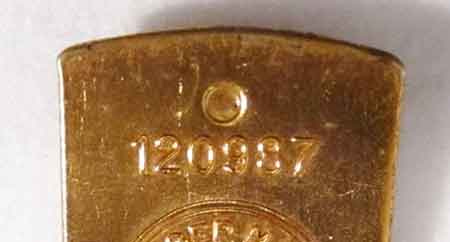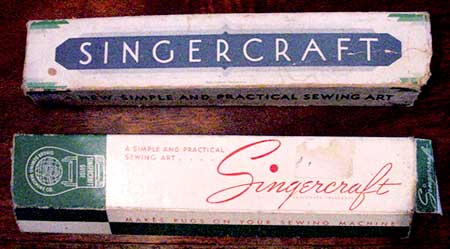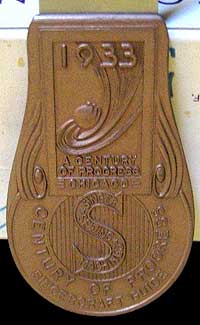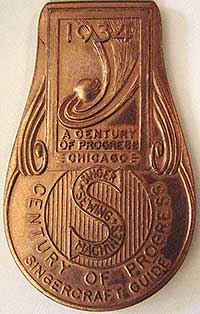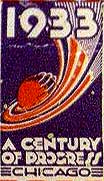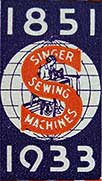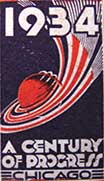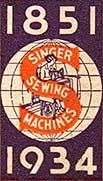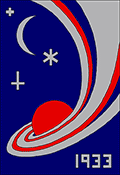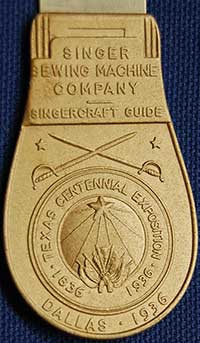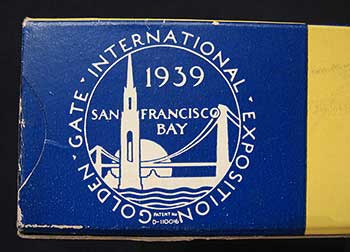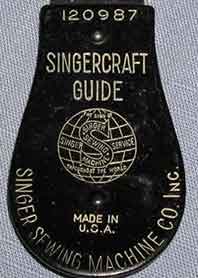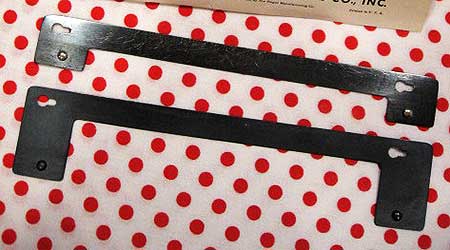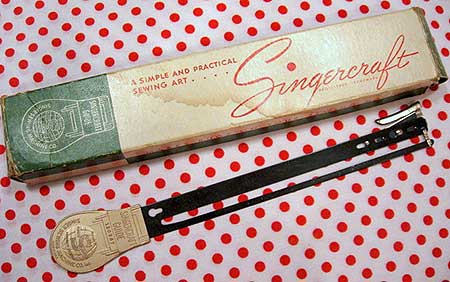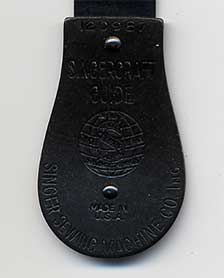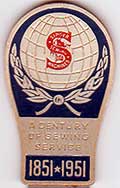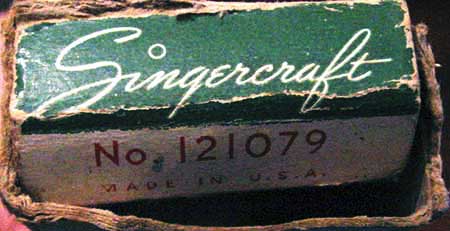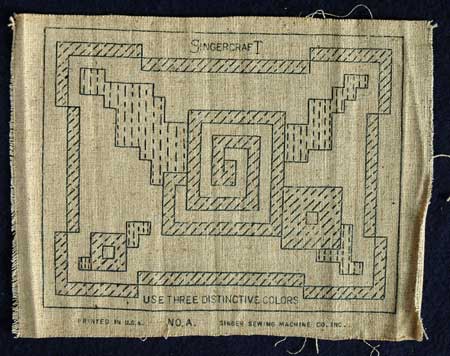
The UK Singercraft Guide – Early 1930’s |
||||||||||||
|
The UK Singercraft guide is longer than the #2 guides and only has the Singer name to identify it.
The knife guard and extensions are also a different shape to those of the Singercraft guides #120987 Unlike the #120987 Singercraft guides, the knife can be used with the extensions attached, meaning that even when making the widest fringes you can still cut the yarn as you sew.
|
|||||||||||
|
||||||||||||
|
Guide #120936
The first guide that was released in the late 1920’s was serial number 120936, shown on the left. They have a little metal button that fits into the slot at the end. The button keeps the guide at a consistent width. Since the button is removable it isn’t unusual to find guides without it. This guide cannot be used with the knife or width extensions but it can be used to make gathered “puffing”, which you cannot do with the later bulb ended Singercraft guides. |
|||||||||||
|
||||||||||||

Serial number 120987 (shown at a slight angle. It is actually flat on the end, not angled).
Pictures of the flat ended Singercraft guide 120987 were kindly supplied by Haute Goat Recycled Cashmere – See their blog and etsy shop, plus a tutorial on using the guide to make stitched on fringing |
Guide #120987
The guide with serial number 120987 has the same thin end as guide 120936 but it can be used with the knife and width extension attachments. The button used to keep the guide at a consistent width has also been replaced with a loop. |
|||||||||||
|
Standard Colouring #120987 Bulb Ended Guides
Standard Singercraft guide #2’s with a bulb shaped end were produced with two different finishes, bronze and aluminium (or aluminum). Special edition guides were produced when the Singer Sewing company exhibited at various north American expositions in the 1930’s, when machines with special finishes were made, and for the company’s centenary celebration. |
|||||||||||
|
Chicago World’s Fair 1933 and 1934
The Chicago “Century of Progress” world’s fair was originally to be held 1933. It was considered such a success that organisers decided to run it again from May to October, 1934. One of the exhibitors was of course the Singer Sewing Company, who released a special souvenir edition of the Singercraft guide for the fair.
Chicago Century of Progress Guides were released for both 1933 and 1934. One side of the box sports the Century of Progress logo and the other has the Singer logo.
The souvenir package included Transfer A, a special edition iron-on transfer for making a Singercraft rug and was packaged with the 1932 Instruction Sheet |
|||||||||||
|
Texas Centennial Exposition 1936
The Texas centenary exposition celebrated 100 years since the state’s independence from Mexico in 1836. It ran from 6th of June to the 29th of November 1936. Visit the Texas Centennial Exposition website by Steven Butler. Amongst the fascinating information and images on this website is a list of exhibitors which includes the Singer Sewing Machine Co. |
|||||||||||
|
Golden Gate International Exposition 1939
“The Golden Gate International Exposition (1939 and 1940), held at San Francisco, California’s Treasure Island, was a World’s Fair that celebrated, among other things, the city’s two newly-built bridges. The San Francisco – Oakland Bay Bridge was dedicated in 1936 and the Golden Gate Bridge was dedicated in 1937. The exposition was opened initially from February 18, 1939 through October 29, 1939. It opened again from May 25, 1940 through September 29, 1940.” – from the wikipedia entry. Read about the exposition on Wikipedia There are a large number of videos of the Golden Gate Exposition to view via Google Videos |
|||||||||||
|
Blackside Guide #120987
Aside from the writing, blackside guides are black all-over with no silver metal showing. They have a somewhat shiny finish, as opposed to the dull textured surface of the “crinkle finish” guide. The writing and logo on the blackside guides is coloured white.Width extensions were also made with the blackside finish. Whilst extremely rare, there are guides that were made with some blackside parts, and some regular parts as you can see on the left. According to the Featherweight 221 website (no longer available), machines with the blackside finish were “Manufactured before and after WWII when chromium and nickel were difficult to come by” which would probably date the blackside Singercraft guides during this time. |
|||||||||||
|
Crinkle Finish Guide #120987
Crinkle Singercraft guides have a matte black finish. Unlike the blackside guides, the writing and logo are coloured the same as the background and can be a little difficult to see in photographs. According to the Featherweight 221 website (no longer available), the crinkle finish was produced throughout the 1940’s. |
|||||||||||
|
The Singer Centenary Guide
“Century of Sewing Service” special edition Singercraft guide 1951 The last of the special edition Singercraft guides to be produced was made in 1951 to celebrate 100 years of production of Singer sewing machines. The Singer centenary guide is the only #2 guide to have the design presented “upside down” as you sew. |
|||||||||||
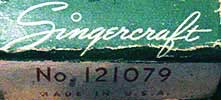 The Mystery of Serial No. 121079 The Mystery of Serial No. 121079 |
||||||||||||
|
I’d like to thank Julie Ferguson for giving me help with finding a lot of information for this article, but particularly this question.
If you have ever wondered why so many Singercraft guides seem to have mismatched boxes I think we have the answer for you. The Singer company is known for giving each part of their attachments individual serial numbers, and also giving another serial number which represented the full set. This may be why we find so many guides with the serial number 120987 in boxes that are marked with the serial number 121079 To quote a US Singercraft advertisement from 1932 “A complete Singercraft kit may be purchased at your Singer shop for 50 cents. This package contains the Singercraft Guide, two transfer patterns, stamped crash backing, step-by-step directions, and many illustrations in actual colours of things to make”. I personally have never seen a Singercraft Guide stamped with the serial number 121079, even though I have seen many boxes with this number. This may be an answer to why this is the case. To quote Julie, “In the MACHINE SEWING teacher’s books, the page that begins the instruction on the rug guide has part number 121079 listed but you can see in the photo or drawing that it is the very same guide that we see over and over with part number 120987” |
|||||||||||
Text copyright Sarah Bradberry, July 25th 2010. Last updated March 29th, 2018. All rights reserved. Images are copyright to Sarah Bradberry unless otherwise noted. All other images are used with permission of the copyright owners.



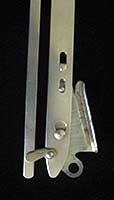

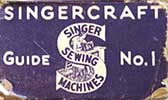


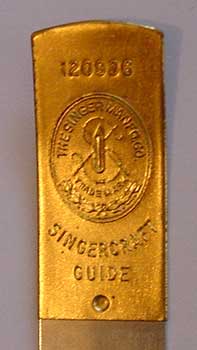
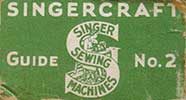 Singercraft Guide No. 2
Singercraft Guide No. 2